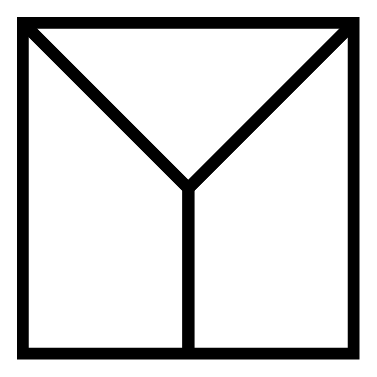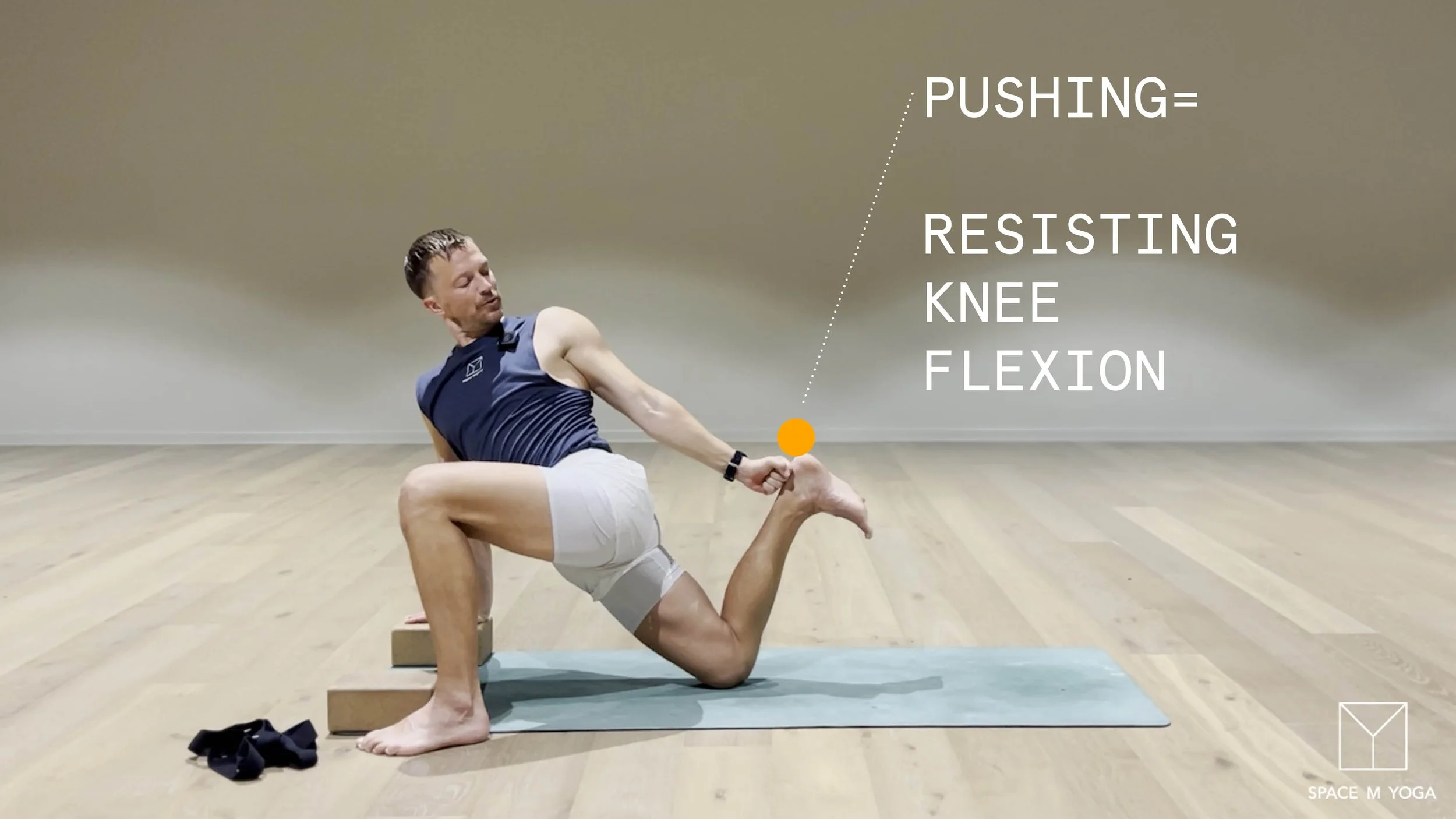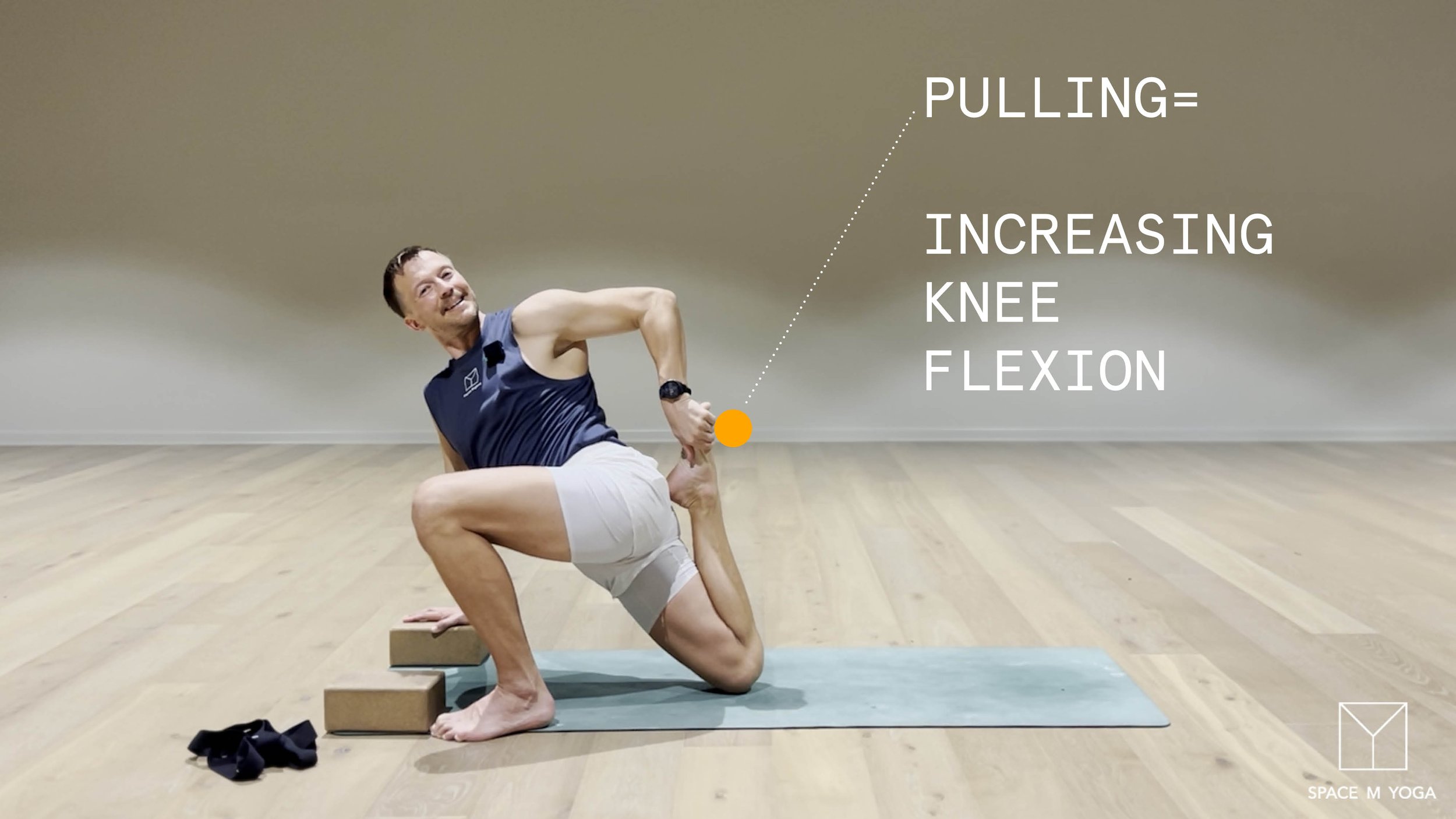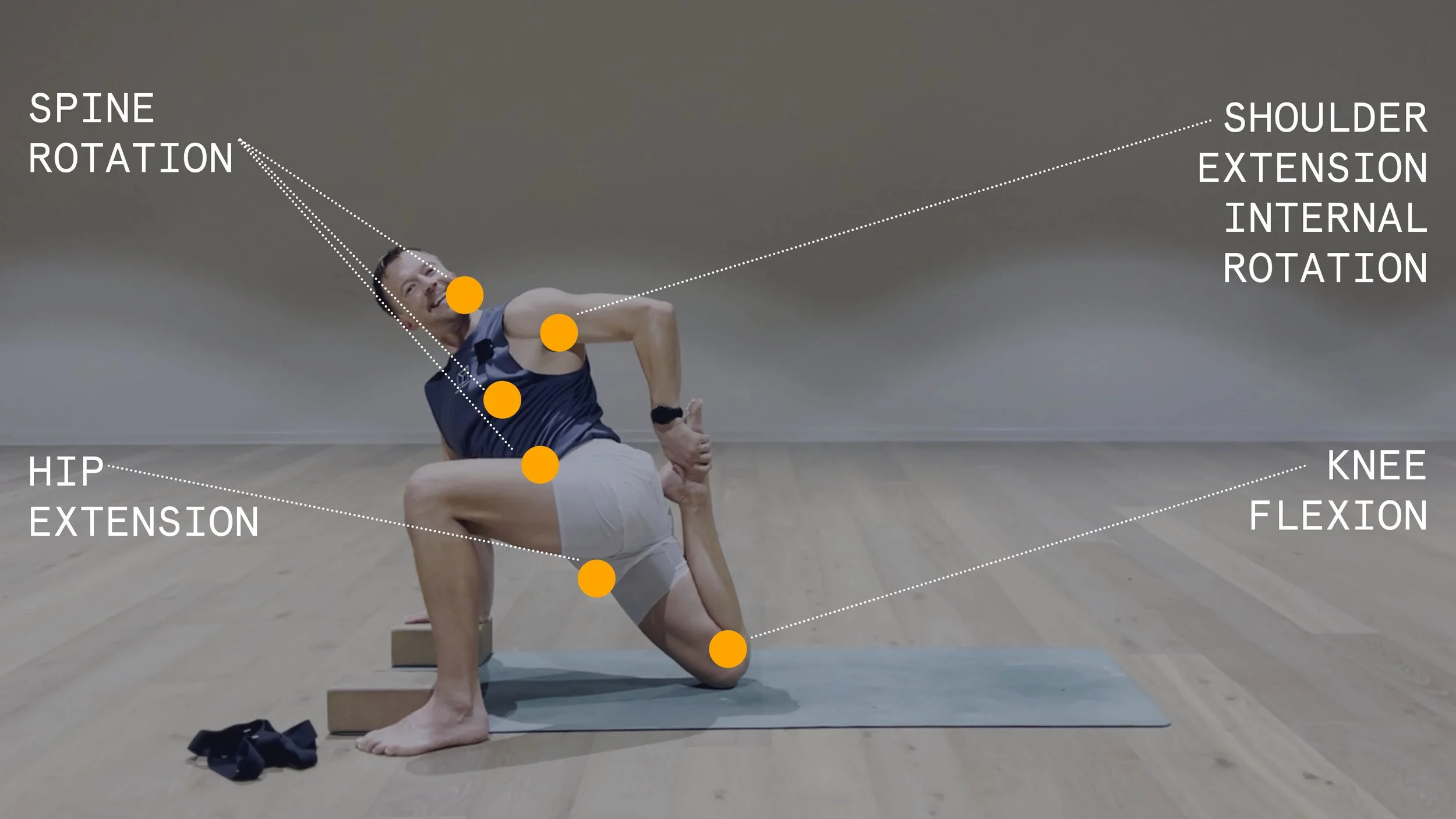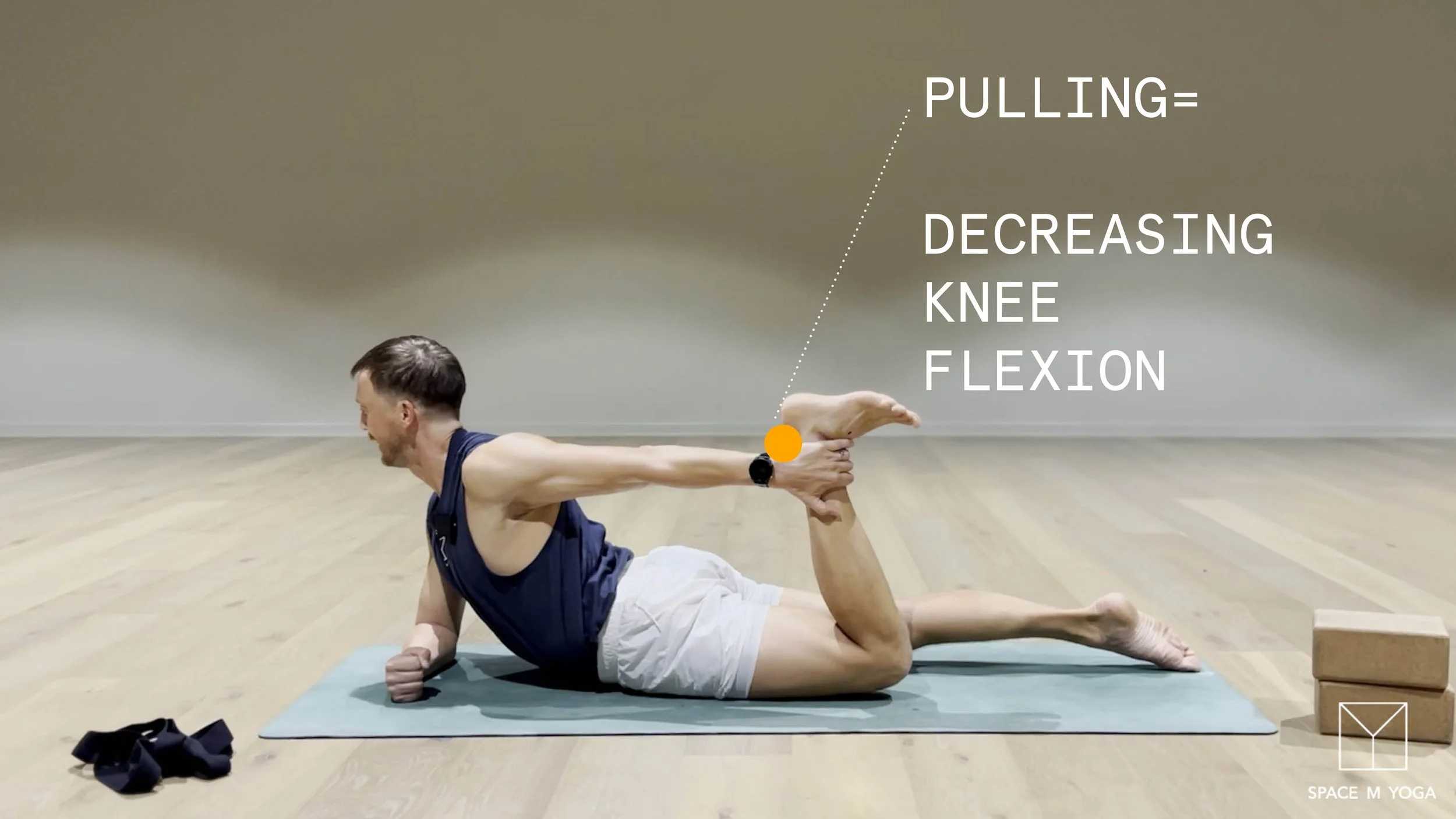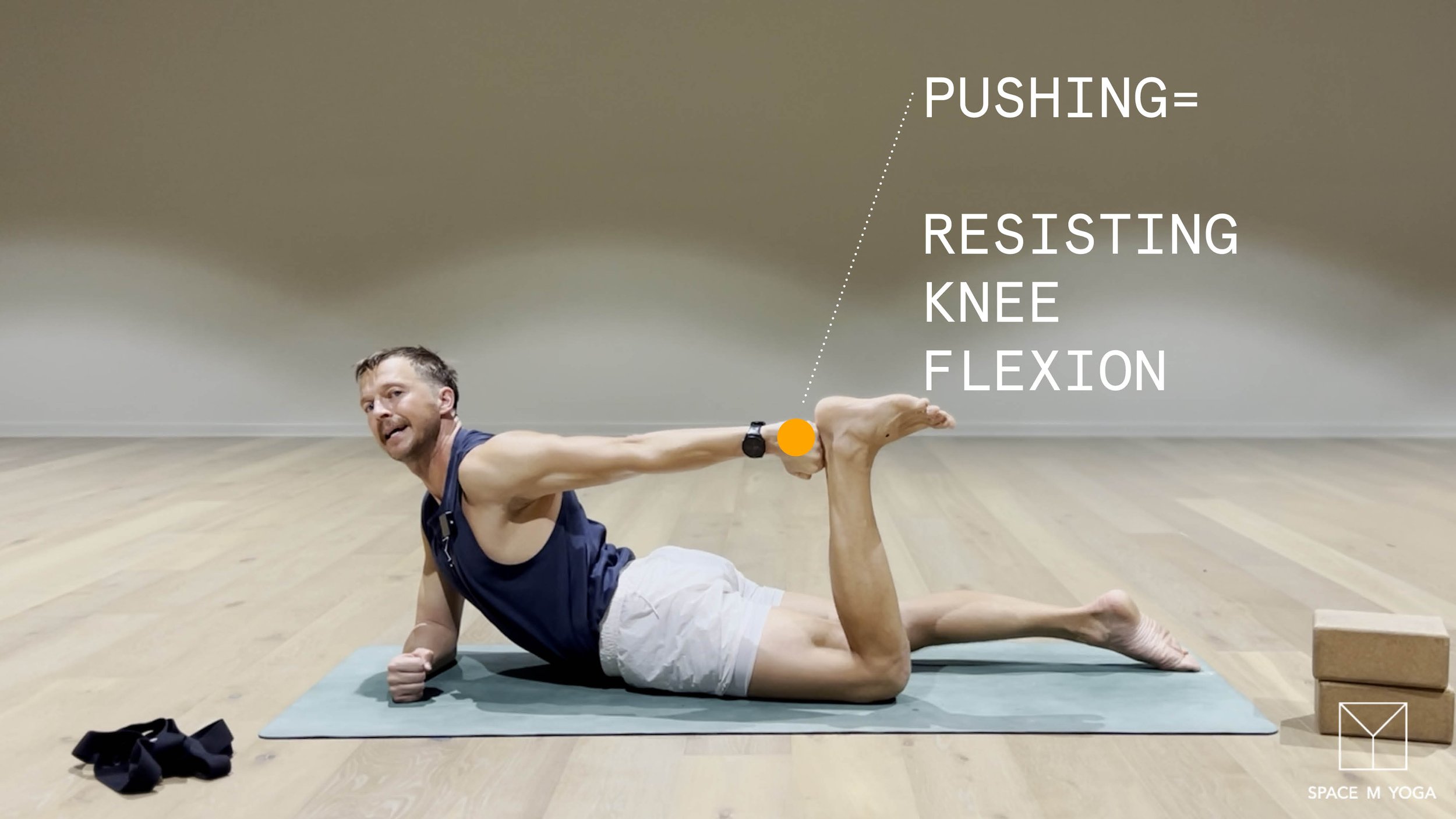Tutorial
What are we talking about?
🤔 What are we talking about?
In many types of exercises, such as yoga and similar practices, you often use your hands and arms to hold and guide another limb, like your other arm or leg, into a desired position. This approach involves actively using your arms to pull the limb into place. Alternatively, another strategy is to allow the limb to move independently, relying on its own strength and control to achieve a greater range of motion and reach the desired position.
👁️ Play the video
In this video clip, I demonstrate a kneeling lunge exercise from my Space M Yoga sequence. In one variation, I use my hand to pull the leg towards my hand, while in the other variation, I resist by blocking with a fist. First and foremost, this is not about right or wrong—it’s simply two different movement strategies.
I often hear bold claims that one option is better than the other, but when it comes to the effect on range of motion, we don’t have any data to support that one type of flexibility exercise is more effective. Instead, it’s more about volume, consistency, and the ability to reproduce stress on the body over a long period of time.
Another discussion is whether certain types of flexibility exercises can help prevent injuries and pain management, but I have not yet find any studies supporting this argument. If you’ve come across any, please share them with me!
🤓 It depends
Let’s set aside the idea of “right or wrong” and instead apply a perspective of “it depends” to deepen our understanding of movement science and learn to analyse movement from a broader viewpoint.
→ Resisting knee flexion = pushing
The knee moves into flexion due to the contraction of the muscles at the back of the leg (hamstrings). To maintain the position of the other joint complexes, global tension is required. The supporting hand presses firmly against the ground, the spine rotates towards the legs, and the airborne arm is pressing towards the foot.
When the arm is blocking the foot, I hold it with a fist and an extended elbow. If you would like to challenge yourself and increase knee flexion further, you could block the leg with a bent arm. Another option is to place a block (or any other supportive object) between the back of the hips and the heel.
However you choose to block the foot, many people who lack experience with this type of angle and muscle contraction may experience a cramp. A cramp is essentially an involuntary and sudden tightening or spasm of the muscle, which can feel uncomfortable or even painful. However, a cramp is not harmful; it is simply a sign that the body is not accustomed to this type of movement. With consistent practice over time, you can build strength and overcome the limitations caused by cramps. It’s an isometric muscle contraction. At the same time, you need to have enough flexibility to maintain hip extension while performing knee flexion.
This type of movement is often referred to as an ‘active flexibility exercise.’ To be more precise, it is an active contraction around the selected joint complex and its associated activated muscle groups. There may be other areas in the body that are not as activated and can potentially be categorized as “passive.”
← Increasing knee flexion= pulling
Let’s look at the other option.
The knee moves into flexion as a result of the contraction of muscles around the spine and the reaching arm. Initially, the knee flexion is often driven by active knee flexion range, but once the hand and foot connect, the movement begins to rely on the pulling action of the arm.
Compared to the previous option, the muscles at the back of the upper leg do not need to be activated, making this type of movement a 'passive flexibility exercise.' However, other parts of the body must remain active to maintain the position in the kneeling lunge and to continue pulling the leg.
→ vs ← Difference between pulling and pushing
To achieve both options, the entire body needs to work together, and the collaboration will vary slightly between the two options.
As you can see, there is a discrepancy between my active and passive range of knee flexion. There will always be more range available when you pull with your hand. You can combine the two methods in either order—start with pulling and finish with pushing, or do the opposite. Both approaches work. It will create different levels of stress on the tissue.
💡Another idea
In this Half Bow pose, I use two different variations to connect with the leg behind the body: either by resisting knee flexion with my fist pressing toward the heel or by holding around the ankle. From the perspective of active and passive movement, it can be challenging to differentiate between them. In one variation, the muscles of the back leg and spine are more active due to the blocked arm, while in the other variation, the leg kicks back while being held by the hand, activating the muscles at the front of the leg. Once again the idea of “passive” and “active” is being challenged. Similar, yet different!
🌈 Summary
The terms "active" and "passive" can be somewhat confusing. If you use these types of descriptions, it’s important to specify which part of the body you are referring to. For example, it may be relatively passive in terms of muscular activity around the chosen joint complex (such as the hip and knee in this case), while other parts of the body, like the shoulder and spine, may be more engaged during the passive reach.
The reasons for injury are complex, and we cannot definitively say that the cause of your injury is solely due to the discrepancy between your passive and active range of motion.
Instead of viewing movement as simply right or wrong, could it be seen as complementary and interconnected? It’s important to recognize that we have different movement strategies, each with its own time and place.
Another option is to consider how you prefer to move. Sometimes, moving in a certain way feels more comfortable. Do what works best for you.
Can you transfer the ideas about pushing and pulling into your own practice?
Next online Space M Yoga Inspiration (live on Zoom or/and replay if you can’t join) will be held Saturday 10th of January 2026. Sign up here!
//Magnus Ringberg
